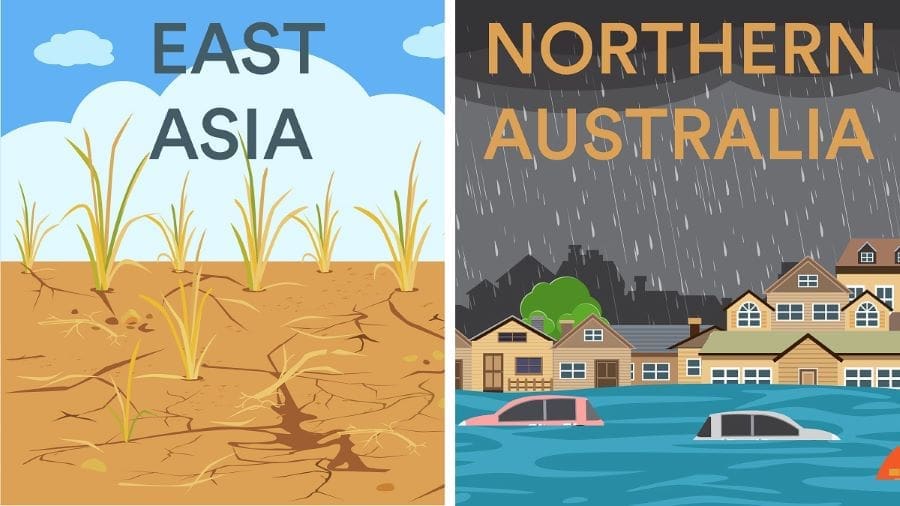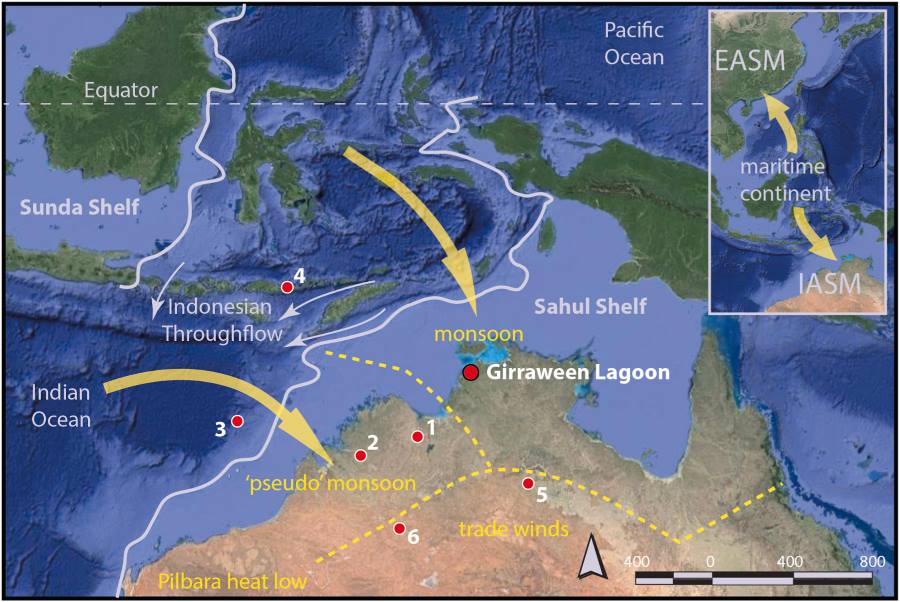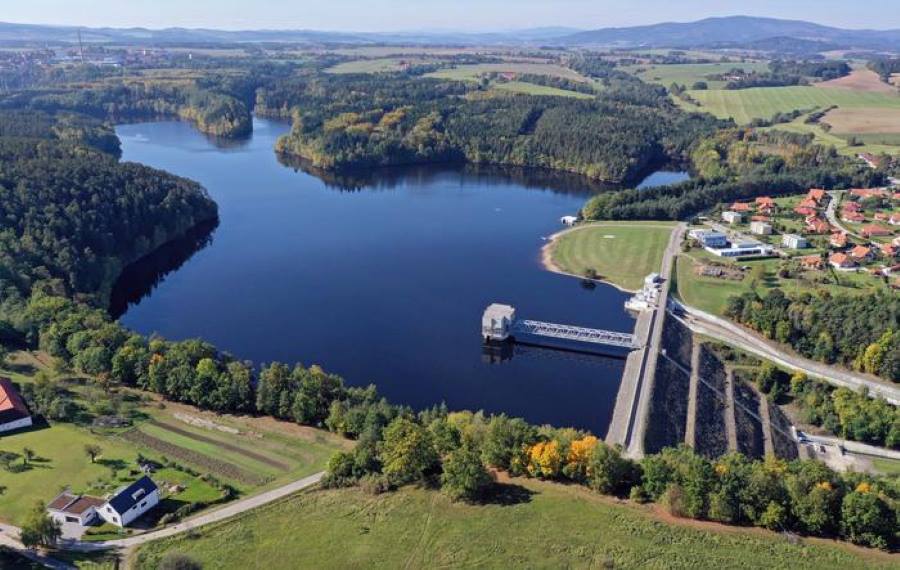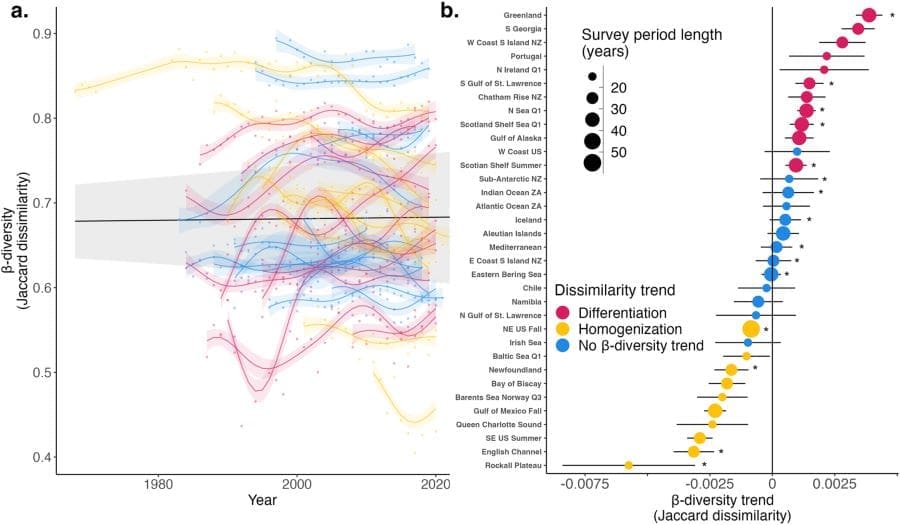Explore the latest insights from top science journals in the Muser Press daily roundup (July 9, 2025), featuring impactful research on climate change challenges.
In brief:
University of Houston engineer creates a possible replacement for plastic
In a world overrun with plastic garbage, causing untold environmental woes, University of Houston assistant professor of mechanical and aerospace engineering, Maksud Rahman, has developed a way to turn bacterial cellulose – a biodegradable material – into a multifunctional material with the potential to replace plastic.

Yes, it has the potential to become your next disposable water bottle, and so much more, like packaging material or even wound dressings – all made from one of the Earth’s abundant and biodegradable biopolymers: bacterial cellulose.
“We envision these strong, multifunctional and eco-friendly bacterial cellulose sheets becoming ubiquitous, replacing plastics in various industries and helping mitigate environmental damage,” said Rahman, who is reporting his work in Nature Communications.
“We report a simple, single-step and scalable bottom-up strategy to biosynthesize robust bacterial cellulose sheets with aligned nanofibrils and bacterial cellulose-based multi-functional hybrid nanosheets using shear forces from fluid flow in a rotational culture device. The resulting bacterial cellulose sheets display high tensile strength flexibility, foldability, optical transparency, and long-term mechanical stability,” said Rahman.
M.A.S.R. Saadi, a doctoral student at Rice University, served as the study’s first author and Shyam Bhakta, a postdoctoral fellow in Biosciences at Rice, supported the biological implementation.
Growing concern over the harmful effects of petroleum-based, non-degradable materials on the environment has intensified the demand for sustainable alternatives, such as natural or biomaterials. Bacterial cellulose has emerged as a potential biomaterial that is naturally abundant, biodegradable and biocompatible.
To strengthen the cellulose and create more functionality, the team incorporated boron nitride nanosheets into the liquid that feeds the bacteria, and fabricated bacterial cellulose-boron nitride hybrid nanosheets with even better mechanical properties (tensile strength up to ~ 553 MPa) and thermal properties (three times faster rate of heat dissipation compared to samples).
“This scalable, single step bio-fabrication approach yielding aligned, strong and multifunctional bacterial cellulose sheets would pave the way towards applications in structural materials, thermal management, packaging, textiles, green electronics and energy storage,” Rahman said. “We’re essentially guiding the bacteria to behave with purpose. Rather than moving randomly, we direct their motion, so they produce cellulose in an organized way. This controlled behavior, combined with our flexible biosynthesis method with various nanomaterials, enables us to achieve both structural alignment and multifunctional properties in the material at the same time.”
And by moving, Rahman means spinning, introducing a custom-designed rotation culture device where cellulose-producing bacteria are cultured in a cylindrical oxygen-permeable incubator continuously spun using a central shaft to produce directional fluid flow. This flow results in consistent directional travel of the bacteria.
“That significantly improves nanofibril alignment in bulk bacterial cellulose sheets,” Rahman said. “This work is an epitome of interdisciplinary science at the intersection of materials science, biology and nanoengineering.”
Journal Reference:
Saadi, M., Cui, Y., Bhakta, S.P. et al., ‘Flow-induced 2D nanomaterials intercalated aligned bacterial cellulose’, Nature Communications 16, 5825 (2025). DOI: 10.1038/s41467-025-60242-1
Article Source:
Press Release/Material by Laurie Fickman | University of Houston
Tree pollen reveals 150,000 years of monsoon history – and a warning for Australia’s northern rainfall
Northern Australia’s annual monsoon season brings relief to drought-stricken lands and revitalises crops and livestock for farmers. But a study of 150,000 years of climate records shows that the monsoon is likely to intensify – triggering a higher risk of flooding while worsening the impact of droughts in East Asia.
Led by Professor Michael Bird, researchers at James Cook University and Flinders University have assessed sediments at Girraween Lagoon near Darwin, revealing a continuous record of monsoon rainfall patterns dating back beyond the last interglacial period.

This research published in the scientific journal Quaternary Science Reviews offers insight into how climate change could alter monsoon patterns across East Asia and Australia.
“This is the longest terrestrial record ever produced at the southern end of the Indo-Australian monsoon system, which delivers vital rainfall to millions across the Southern Hemisphere. The record also has implications for the Northern Hemisphere where tens of millions in Asia rely on monsoons for food and their livelihoods.
“Our study shows how the two monsoon systems are interrelated over thousands of years and reveals what causes them to change. Our analyses shows that that rainfall in northern Australia is closely tied to sea level changes, which shift the location of the northern coastline by up to 320 km.
“These shifts strongly alter local rainfall, with wetter periods occurring when the coastline is closer to the Australian landmass and the oppose effect is prolonged drought in East Asia.”
“Intriguingly, the research also uncovered what we consider bursts of intense monsoon activity – some lasting less than 10,000 years. These bursts align with Heinrich events – abrupt pulses of freshwater into the North Atlantic from rapidly melting ice linked to the weakening of the Gulf Stream in the Atlantic Ocean,” said Professor Bird.

These findings carry a warning from scientists because the Gulf Stream is already weakening due to climate change, and the study suggests this could lead to increased rainfall in northern Australia while contributing to droughts in parts of East Asia.
“This isn’t just ancient history. It is a window into the rainfall patterns that are emerging today. Our data suggest that the weather trends we’re witnessing like the drying in China and wetting in northern Australia could accelerate if the Gulf Stream continues to weaken, so we need to be ready for that scenario,” says study co-author, Professor Corey Bradshaw, a Global Ecologist at Flinders University.
“It’s not surprising. Decreasing rainfall in parts of the east Asian summer monsoon region has been identified in rainfall records since the 1960s, while increasing rainfall has been evident in north-western Australia since the last century, accelerating since the 1950s. Our new data suggest that further weakening of the Gulf Stream could reinforce these trends even more in the future, with consequences for both regions.”
“We need to put this impact into context because this region extends from China through Southeast Asia, the maritime continent, and western Indo-Pacific warm pool on the Equator, to Australia. The region is home to almost a billion people and five terrestrial Biodiversity Hotspots.”
***
The research was supported by the Australian Research Council Centre of Excellence for Australian Biodiversity and Heritage (CE170100015) and Centre of Excellence for Indigenous and Environmental Histories and Futures (CE230100009), and an Australian Research Council Laureate Fellowship (FL140100044).
Journal Reference:
Michael I. Bird, Michael Brand, Rainy Comley, Xennephone Hadeen, Zenobia Jacobs, Cassandra Rowe, Frédérik Saltré, Christopher M. Wurster, Costijn Zwart, Corey J.A. Bradshaw, ‘A 150,000-year lacustrine record of the Indo-Australian monsoon from northern Australia’, Quaternary Science Reviews 366, 109504 (2025). DOI: 10.1016/j.quascirev.2025.109504
Article Source:
Press Release/Material by Flinders University
How lakes connect to groundwater critical for resilience to climate change, research finds
The study drew on data from 350 lakes across 18 European countries, collected between 2022 and 2024, to provide a comprehensive picture of how the continent’s lakes are coping with climate change. The research is presented today (Wednesday 9 July, 2025) at the Goldschmidt Conference in Prague.
The researchers, from the Czech Academy of Sciences, analysed the proportions of stable hydrogen and oxygen isotopes (18O and 2H) in the lakes’ water. These isotopic signatures help reveal the influence of rainfall, assess the potential connection between groundwater and lakes, and determine the extent to which incoming water offsets losses from evaporation.
The team combined these variables with open access environmental data, including meteorological variables (mean annual temperature and precipitation, climate type, relative humidity), percentage of land use (bare land, cropland, forest, grassland, snow, urban), and catchment characteristics (lake type, size, maximum depth and altitude). Using a machine learning model, they identified the key factors sustaining a healthy water balance for each lake and predicted the impact in 2050 of changes in rainfall and temperature linked to climate change.

The study found that lakes with high potential connection from groundwater maintain more stable water levels and are more likely to be able to buffer the impacts of climate change. Shallow lakes, which tend to have a high surface area in relation to their volume, experience high evaporation rates compared to inflow, making them more vulnerable to rising temperatures and reduced rainfall.
The modelling highlighted that lakes in lowland areas are the most likely to reach critical evaporation to inflow ratios by 2050, leading to water scarcity and contamination, with artificial lakes such as reservoirs most at risk. This is because lakes in lowland areas tend to be shallower and often less connected to groundwater, which destabilises the balance between evaporation and inflow. Additionally, these lakes are more likely to be located in regions of intensive agriculture, where runoff from fertilizers and other inputs can lead to elevated nutrient levels and degraded water quality.
Lakes in higher-altitude or alpine areas were found to be most resilient, benefiting from lower temperatures, reduced evaporation rates, and often better connections to groundwater inflow. These lakes are currently less exposed to surrounding agricultural activity and so face fewer issues related to nutrient runoff. However, the researchers caution that agricultural land use is migrating to higher altitude, which could affect the water quality and availability of these lakes in the future.
Dr Ma. Cristina Paule-Mercado, from the Biology Centre, at the Czech Academy of Sciences, is presenting the research at the Goldschmidt Conference. She said: “We initially expected the same controlling factors to apply across all lakes, but that wasn’t the case. While we can draw some general insights from the analysis, we also observed how each region has different dynamics driven by the interaction of multiple variables. This highlights the importance of considering all these factors – and particularly groundwater-lake connectivity – when designing sustainable management strategies to address climate change and water scarcity.”
The team continues to expand their dataset – now incorporating over 400 lakes – with an ambition to make this a global resource. While some of the environmental data come from open-access sources, the researchers also collect samples annually from hundreds of lakes, collaborate with other scientists, an engage in citizen science initiatives. These efforts help broaden their coverage and strengthen community involvement.
***
The Goldschmidt Conference is the world’s foremost geochemistry conference. It is a joint congress of the European Association of Geochemistry and the Geochemical Society (US), and over 4000 delegates attend. It takes place in Prague, Czech Republic, from 6-11 July 2025.
Article Source:
Press Release/Material by European Association of Geochemistry (EAG)
Many seafloor fish communities are retaining their individuality despite human impacts
Despite widespread human impacts to wildlife diversity worldwide, many fish communities on the seafloor have maintained their uniqueness, reports a new study led by Zoë Kitchel, formerly of Rutgers University, and colleagues, published in the open-access journal PLOS Climate.
Around the world, humans have transformed ecosystems through development, hunting and fishing, invasive species and climate change. On land and in freshwater ecosystems, these changes have typically led to a process called homogenization, where the types of organisms living in different areas become more similar over time, as native species are replaced with introduced species and species good at tolerating human activity. However, previously it was unclear whether this same trend was occurring in ocean ecosystems.
Kitchel and a large group of collaborators looked at data from scientific fish trawling surveys to identify trends in seafloor fish diversity over time. These surveys included more than 175,000 samples composed of 2,006 fish species living on the seafloor from 34 regions and spanning six decades. The researchers saw that while almost one third of the examined regions showed homogenization, another third actually had an increase in diversity. The remaining 15 regions did not show a clear trend in homogenization over time, with some areas showing big swings in diversity between years.

Further analysis showed that temperatures and the amount of fishing that occurred in the region helped explain some of the shifts in similarity across years and locations.
Overall, the new findings show that, despite intense human impacts on the oceans, the majority of seafloor fish communities do not follow the worldwide trend of homogenization that has occurred in other environments. The research team suggested that future studies could look at terrestrial and freshwater ecosystems to see if they experience similar swings in diversity. They also concluded that, due to the differences in homogenization they observed across different locations, conservation efforts should be tailored specifically to each region to be most effective.
The authors summarize: “Globalization and land-use change has led to widespread homogenization (or the loss of unique combinations of species) across freshwater and terrestrial ecosystems. However, until this study, we were mostly in the dark about whether the oceans were also experiencing this loss of uniqueness across space. We found that overall, communities of fish living on soft-bottom habitat on continental shelves worldwide are not uniformly homogenizing.
“Rather, trends in diversity are regionally specific with locations such as the western Atlantic experiencing homogenization in contrast to places such as Portugal and Greenland experiencing an opposite trend towards elevated uniqueness… we found that community composition is highly dynamic through time, varying from a more homogenized to more heterogeneous state and back again over the course of a few years. This suggests that these communities of fish are resilient to environmental change.”
Dr Kitchel adds: “The long list of co-authors is indicative of the highly collaborative nature of this project. We were able to test for evidence of homogenization across diverse marine shelf ecosystems because of the contributions and knowledge of fisheries biologists from across the world through the FISHGLOB consortium. FISHGLOB is an international consortium of scientists, experts and data providers who collect, curate, standardize, share, and analyse data from scientific bottom trawl surveys (SBTS).
“By facilitating open and multinational science, the consortium’s activities enable the understanding and prediction of fish diversity change and help to guide management actions. SBTS are one of the most widespread and long-running forms of ocean ecosystem monitoring, providing invaluable time-series of marine fish biodiversity over decades of global change.”
Journal Reference:
Kitchel ZJ, Maureaud AA, Fredston A, Shackell N, Mérigot B, Thorson JT, et al., ‘Marine communities do not follow the paradigm of increasing similarity through time’, PLOS Climate 4 (7): e0000659 (2025). DOI: 10.1371/journal.pclm.0000659
Article Source:
Press Release/Material by PLOS
Featured image credit: Gerd Altmann | Pixabay




